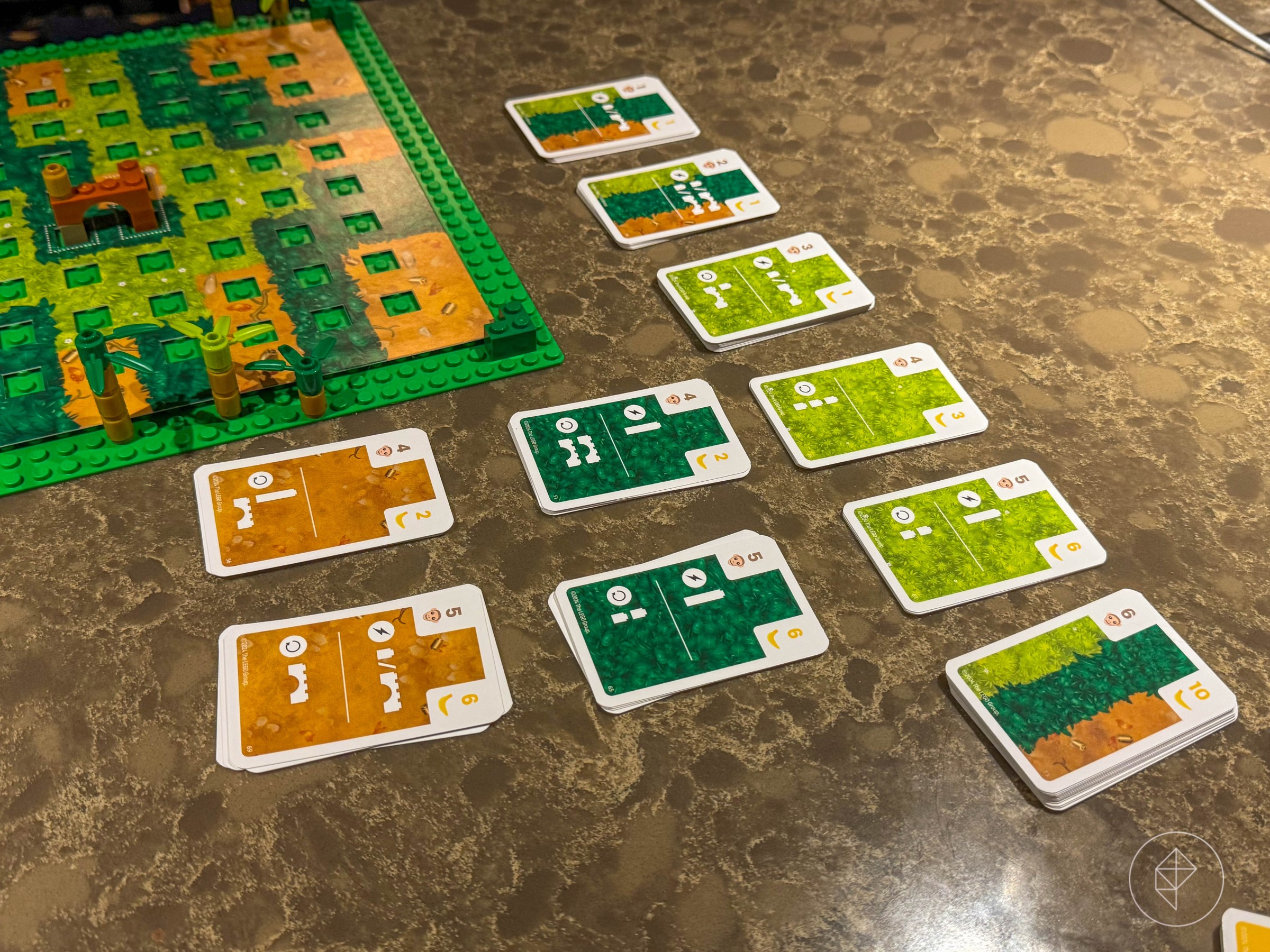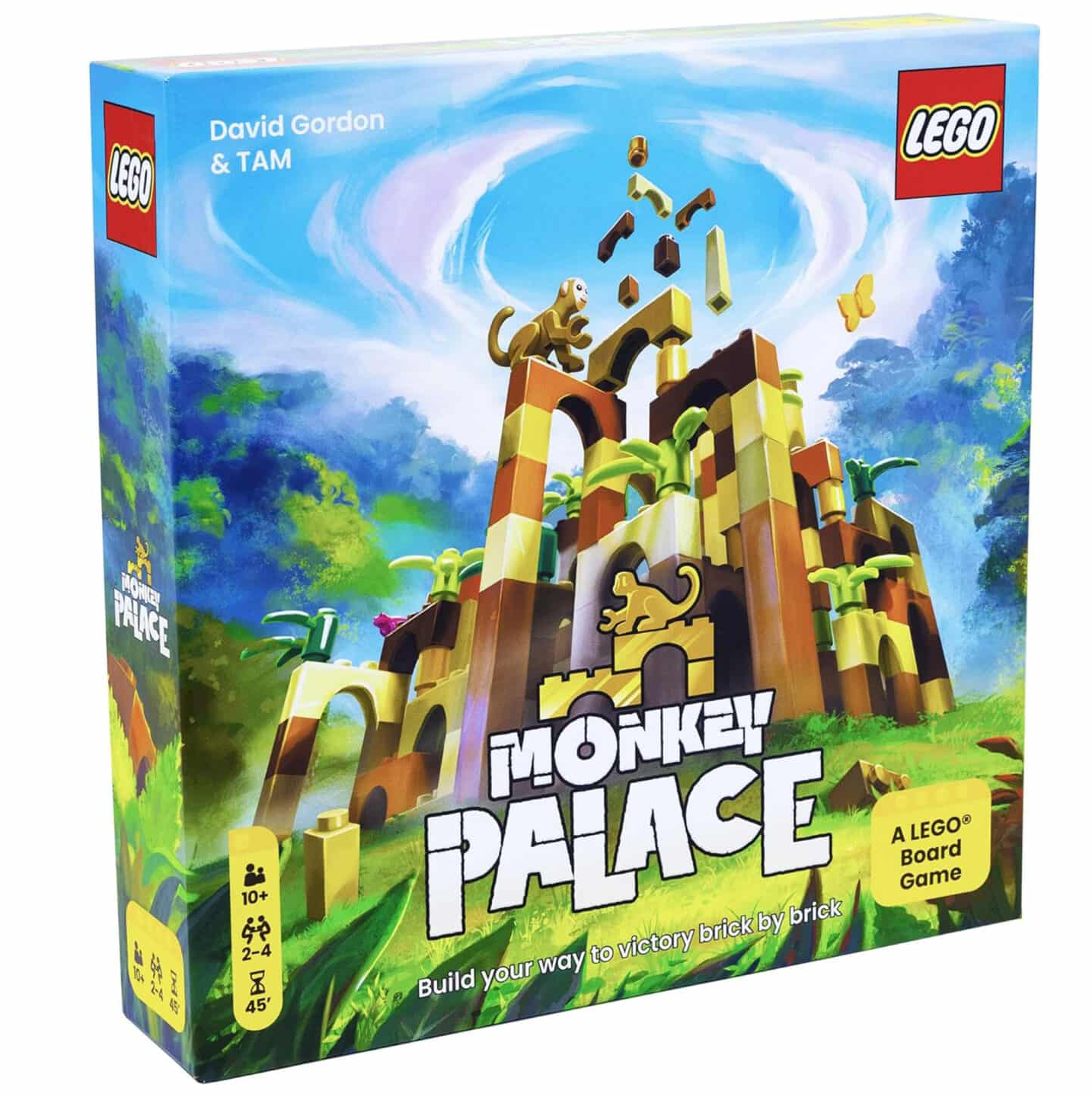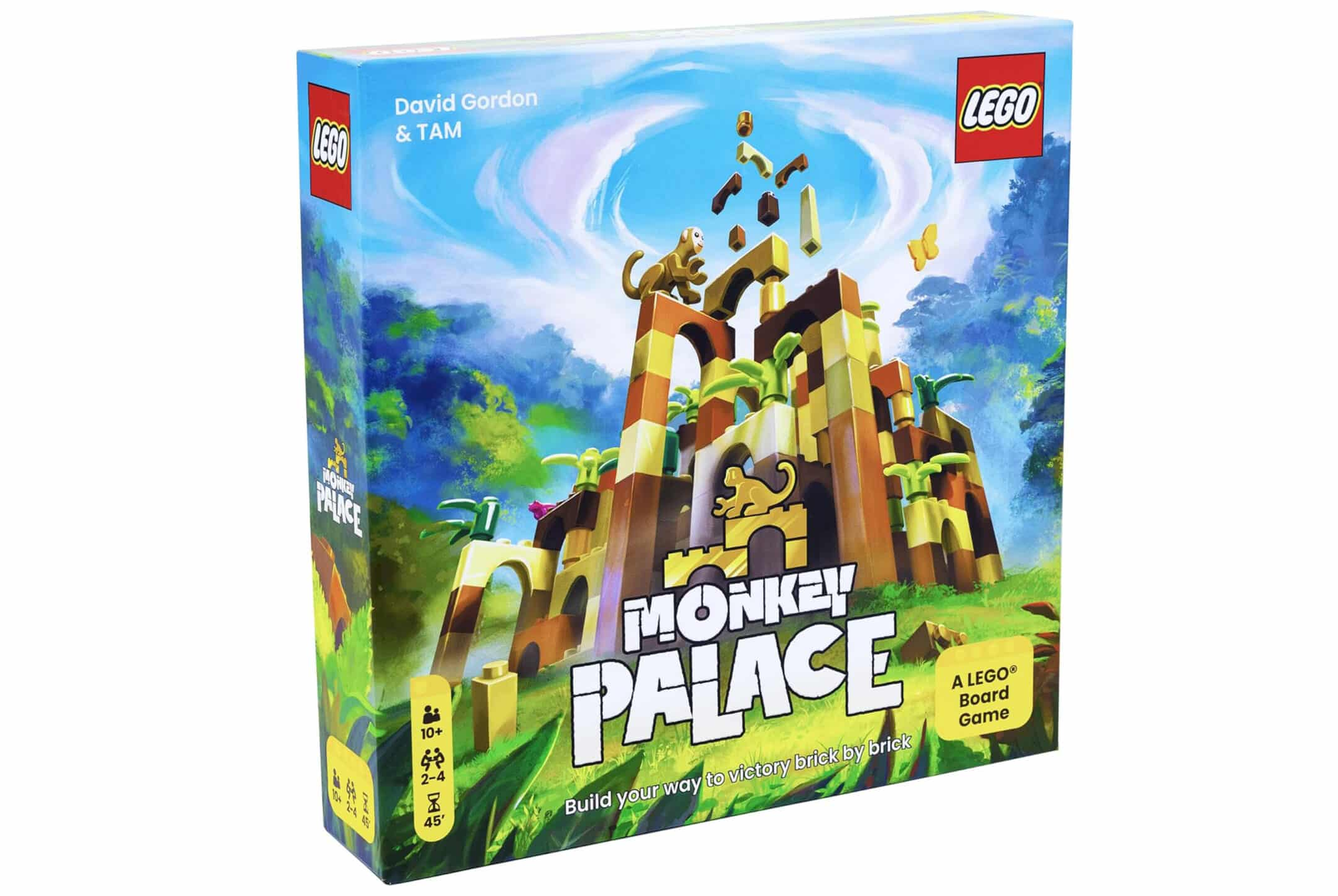Asmodee’s first Lego board game, Monkey Palace, is a collaborative art project disguised as a competitive builder
When I play board games, I have a habit of photographing the table at the very end, just before we set everything up. There’s something intrinsically rewarding about capturing how a game went from box to setup and then from setup to a full game – capturing how busy and hectic everything became, as seen in the token-laden boards and stacks of cards in various states of disarray. It’s not like we built anything permanent or long-lasting, but I still like to take the time to capture a memory of that experience.
Monkey Palace seems designed for someone like me, someone who needs to view the end of the game as an opportunity to photograph a collaborative creation. Co-designed by David Gordon and TAM (aka Tam Myaing) and retails for $39.99, Monkey Palace puts players in the role of highly intelligent monkeys who work together in the jungle to build a tower of Lego bricks. Only by reaching high into the canopy can the monkeys get the most bananas, which are shown in the endgame score as the monkeys with the most banana points. Lego is the center of it all, and the result is very rewarding – sometimes frustrating, yes, but overall very rewarding.
The concept for Monkey Palace is quite easy to explain, but the devil is in the details. Each turn, your monkey uses a combination of arches and support blocks (both 1×1 bricks and, more rarely, taller 3×1 columns) to build a path from the jungle floor as high as possible. There are several rules for how this works, but the gist is that the structure must always grow taller with each piece added, and players must build, at least partially, on top of the existing structure.
The height and length of your improvised staircase that turns determines how many monkey points you get. It’s a short-term, take-it-or-lose-it currency that players can quickly exchange to buy cards on a shared marketplace, and this is where the strategic layer really starts to kick in. Cards have both immediate and long-term benefits. term rewards, and only by choosing the right mix of cards in the market can monkeys come out on top. Perhaps you’ll snag a few more bows in short order, with the promise of additional support pieces rolling in in future rounds. Or maybe you’re confident in your stash and choose to buy big bundles of bananas instead. Fortunately, the marketplace refreshes automatically with every purchase, so new mechanics are constantly coming into play.
When you first open the box, it seems like something is missing, like you’ll run out of Lego before the game is over. But the beauty of Monkey Palace is that it naturally goes vertical very quickly, with the pieces creating a dense, architectural form that flows together around one or two high points, and from there slowly slopes downwards. It’s a rather neat system that seems to come together organically among the players by mandating that everything stay connected and rewarding verticality. Additionally, the number of bricks you pick up each round grows exponentially as you buy more cards, allowing you to create longer and more elaborate structures.
Tactically, I found the need to find a balance between arc placement – the only piece that gives you Monkey Points – and the support beams that allow you to overcome particularly high blockers. Of course, these monkeys only need the stairs that you build upwards at every step they don’t need to go up gradualand more often than not, in the late game you’ll find yourself cashing in a lot of support stones at once just to get one more arch built near or on top of the makeshift tower.
There are a handful of special rules that complicate this system and can shake up the dynamics between players. Decorative stones – an assortment of leaves or a shiny gold column – are added at the end of each path and are determined by the type of surface you start your path on. Depending on the decoration and height, you may be able to summon the monkey piece, which will allow you to block your opponents’ path. We particularly liked the butterfly piece, which essentially blocks the top spot from being used until another top spot takes over the mantle. This had the knock-on effect of having to break from just one vertical tower and look for other ‘back-up’ spiers to build around, which ultimately made for a more interesting final backdrop.
But Lego is both Monkey Palace‘s greatest blessing and also the biggest bone of contention among those we tested with. When planning a turn, most players first think about the highest point they can reach and then work backwards to figure out if that’s possible. The problem here is that you literally can’t build with Lego like this: they to have to start at the bottom and work your way up so you don’t find yourself trying to squeeze connectors from your ambitious staircase to the pre-existing support structure you’re building on. Far too often a player would try to go this way, risking breaking parts of the structure. Eventually we found ways to think about how to play ‘from the bottom up’ – to find the right patterns that we could build on top of with a little confidence and hope for the best – but this method proved counter-intuitive.
In a strange way, many of these mechanics and scenarios reminded me Scrabblebut for STEM kids. Many of the same gameplay patterns can be found here: The need for a good balance between high score value tiles (arcs) and low score support tiles (columns); the time other players spend planning your kick; and the subsequent pain when all your plans go awry when another player takes your place.
But that pain is more a testament to how invested we have been in the game – even if we honestly didn’t care who won anymore. There is a tangibility to it Monkey Palace that even surpasses the desire to win. Sure, we kept score and celebrated our wins as much as our losses, but ultimately what we really enjoyed was the 3D creation at the end – something that was created together in an organic way. I suspect the shapes will start to feel similar over several games, as is the case with the way the system encourages a gradual slope, but we still appreciated having something we built together. And unlike other board games, I didn’t have to immediately break down the board and put everything away. Our most recent game even remains intact, a temporary centerpiece for our kitchen table.
That Monkey Palace is fueled by Lego pieces, a brand that has an almost visceral association with reckless building for fun, is only more appropriate.
Monkey Palace was assessed with a copy supplied by Asmodee. Vox Media has affiliate partnerships. These do not influence editorial content, although Vox Media may earn commissions on products purchased through affiliate links. Additional information about Polygon’s ethics policy can be found here.



